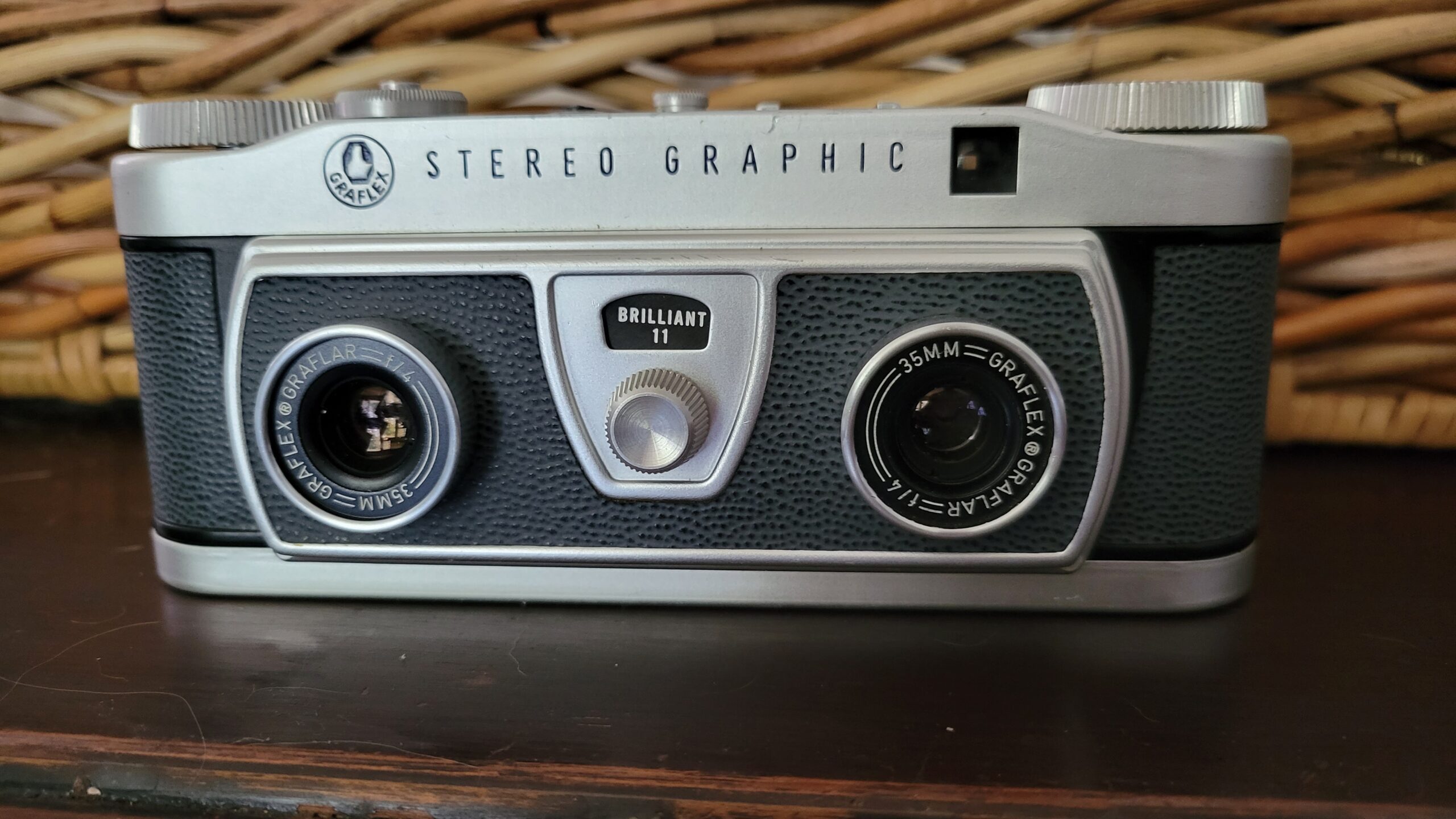The Graflex Stereo Graphic Camera
Graflex, a renowned American camera manufacturer, has a rich history spanning over a century. Known for their innovative designs and high-quality craftsmanship, Graflex cameras have been favored by professionals and enthusiasts alike. The Stereo Graphic camera is a testament to Graflex’s commitment to pushing the boundaries of photographic technology.

The Stereo Graphic camera, introduced in the early 1950s, is a remarkable piece of engineering. Its purpose is to capture stereoscopic images—creating an illusion of depth and immersion. The camera uses two lenses, spaced apart to replicate the distance between human eyes. This configuration allows for the simultaneous capture of two slightly different images, enhancing the perception of depth when viewed together.
One of the enduring appeals of the Stereo Graphic camera is the nostalgia and tactile experience it offers. Shooting with film evokes a sense of anticipation and craftsmanship. Each roll of film becomes a tangible collection of moments, waiting to be developed and revealed. The limitations of film, such as the finite number of exposures and the absence of instant review, encourage photographers to be more deliberate and thoughtful in their approach, resulting in a more immersive and rewarding creative process.
Using the Camera
I received this camera as a gift some time ago. I had been trying to manually recreate stereoscopic images to fit into a stereoscope viewer and was having limited success. Seeing this particular camera in a box was absolutely brilliant.
The camera is incredibly easy to use. It has one viewfinder, not two, so it’s easy to frame the subject. The shutter release and film advance are also relatively easy to use. To really add to the “ease of use” factor There is only one focal length and aperture settings which are labelled as “cloudy”, “hazy”, “bright”, “brilliant”, and simply “f16”.
Normal 35mm film is used, with one frame behind each of the lenses, which are released simultaneously.
Creating the 3d stereo image really requires having both a foreground and a background subject. I was able to do this, mostly; sadly, the better framed objects that I did have did not have both left and right image developed or scanned well enough to work.
The manual suggests colour film. I used black and white and developed on my own with limited success. Colour film is practically a requirement, and my haphazard method of home developing provided limited results. Further, my scanner had a difficult time identifying which frame was which. The next time I use this camera I will use colour film and will send it off to be developed and scanned.
And there will be a next time. This was a fun camera to use, and I’m looking forward to using it again.









